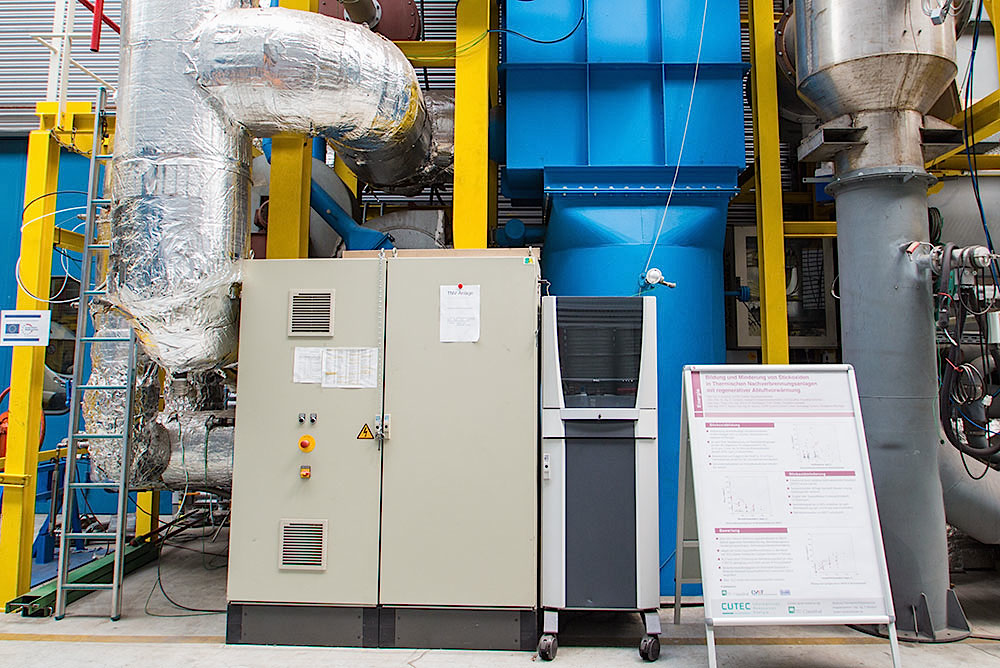Description
Thermal post-combustion systems with recuperative exhaust air preheating (TNV systems for short) are used to clean industrial exhaust air flows. The pollutants contained in the exhaust air - mostly volatile organic compounds (VOCs) such as alkanes, aromatic compounds, solvents and the like - are almost completely oxidized at high temperatures in the combustion chamber of the systems and converted into the harmless compounds carbon dioxide and water.
A large proportion of the enthalpy of the hot clean gas is recovered by downstream recuperators and used to preheat the exhaust air. The systems are mainly used in industrial processes with a high pollutant content and a high demand for process heat, for example in print shops, paint shops, plastics processing plants, etc.
The CUTEC Institute's pilot plant is automated with an industry-standard control system and equipped with continuous data logging. The two tube bundle heat exchangers for preheating the exhaust air can be connected in different ways so that different air flows are possible.
The CUTEC Institute's pilot plant can be used, for example, to answer the following questions
- What emission concentrations does a particular burner achieve?
- What clean gas concentrations can be achieved with certain exhaust air compositions?
- What is the oxidation process within the combustion chamber?
- How do the oxidation and formation of secondary pollutants depend on the operating conditions (temperature, residence time, etc.)?
- What efficiency does a particular recuperator achieve?
In addition, it is possible to adapt the system technology depending on the issue and customer requirements. The design, manufacture and installation of equipment modifications can usually be realized by our in-house staff.

DR.-ING. STEFAN VODEGEL
Head of department
Telephone: +49 5323 72-6122
E-mail: stefan.vodegel@cutec.de

